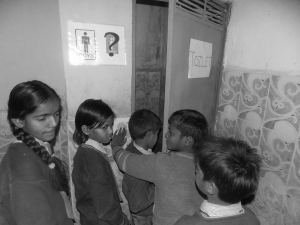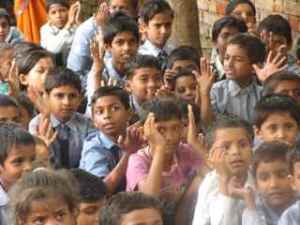“HEALTHY
CHILDREN MAKES HEALTHY NATION”
“Community
Health Camp launched in Ghaziabad”
Gurgaon, 4th December 2013
 On Saturday 30th November, the Gurgaon based NGO "HEEALS"
conducted a free health check-up program in the District Combined Hospital,
Ghaziabad. The event was organised to provide access to free health care for
school children, orphans and street children, who otherwise do not have the
means to acces health care. Following this pilot event, HEEALS intends to
extend the health-check ups further afield, to other areas of Uttar Pradesh,
and Delhi NCR.
On Saturday 30th November, the Gurgaon based NGO "HEEALS"
conducted a free health check-up program in the District Combined Hospital,
Ghaziabad. The event was organised to provide access to free health care for
school children, orphans and street children, who otherwise do not have the
means to acces health care. Following this pilot event, HEEALS intends to
extend the health-check ups further afield, to other areas of Uttar Pradesh,
and Delhi NCR.
In a joint collaboration with District Combined Hospital, Sanjay
Nagar, twenty students from Kaushambi school, Ghaziabad, were brought to
the hospital for access to free health check-ups. A team of doctors in the
hospital volunteered their time in conducting check-ups for the children. These
were conducted by Dr Sandeep Pawar (Chief Medical Officer), Dr Rajesh Kumar
(Dental Surgeon), Dr Mahesh Kumar Tomar
(Patheologist), Dr Anita Singh (Eye surgeon) and Dr D.K. Jain (Paediatrician).
In addition to free medical check-ups, HEEALS provided students with
sanitation kits, distributed by Dr Sandeep Pawar (CMO Sanjay Nagar Hospital),
which included mosquito repellent coils, water purification tablets, sanitary
pads for girls and posters promoting hand wash hygiene.
Among the HEEALS team were two volunteers from the UK: Chris Mammone,
professional photographer, and Sylvie Hughes. Both have been working on
delivering WASH awareness campaigns and presentations on hand washing hygiene
and water sanitation, in schools and orphanages around India.
After the success of their pilot event, HEEALS will be planning future
health-check ups for children in economically disadvantaged sections of
society, and those who live in rural areas. The organization is welcoming any
members of these communities who wish to provide free check-ups to children,
and are accepting requests from schools, orphanages and villages in need.
"Many children are dropping out of school and becoming sick just
because of unhygienic toilets and lack of healthcare, If we provide good
healthcare and WASH facilities, this will raise the standard of education
of children. In the past we had one Einstein. If we provide good healthcare and WASH facilities, we can provide opportunities for many Einstein’s of the
future!" said HEEALS Managing Director-Gaurav Kashyap.
HEEALS (Health, Education,
Environment And Livelihood Society) is working on its Free Health Camp pilot
project in rural and urban slum areas of Uttar Pradesh, to provide access to
free health check-ups in schools and orphanages, as well as providing free
water purification tablets, water filtration systems and mosquito nets to
families. Through providing health care education and awareness to those in
need, HEEALS is working to reduce the number of disease related deaths and
school dropout rates.
Press Release Edited By :
Sylvie Huges
Email : sylvie@heeals.org
Office Address :
692/22/B/Gurgaon-122015
Website: www.heeals.org
Email: communications@heeals.org


















.jpg)
